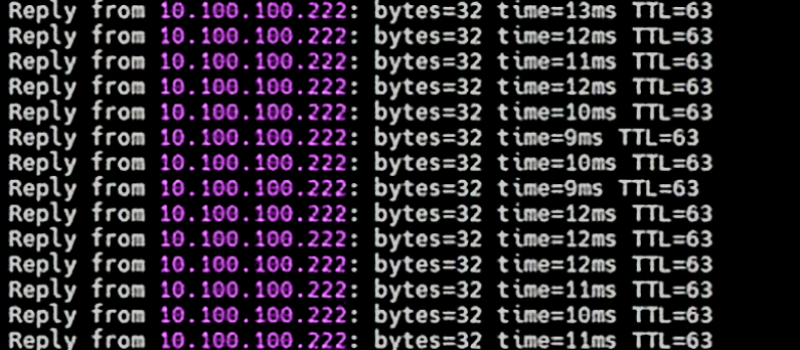And, true Private Network Slicing

ASOCS reached a major breakthrough in May 2022 CYRUS® release – Network Slicing, its private network 5G offering can now offer both eMMB (Mobile Broadband) and URLLC (Ultra-Reliable Low Latency Communication), as a standard on a single system, based on application, device, and customer needs.
URLLC – The driving force for Private 5G
ASOCS reached a major breakthrough in May 2022 CYRUS® release – Network Slicing, its private network 5G offering can now offer both eMMB (Mobile Broadband) and URLLC (Ultra-Reliable Low Latency Communication), as a standard on a single system, based on application, device, and customer needs.
ASOCS’ URLLC has broken the 10-millisecond roundtrip barrier running on a Druid Core and VMware Edge Compute Stack. To put some perspective on this number – 10 milliseconds is one-hundredth of a second. This milestone is set to drive 5G into the next generation of Private 5G networks for enterprises, Industry 4.0, and Smart Manufacturing.
When looking at a factory with AGVs and drones being located, tracked, and directed remotely and automatically via AI, it is URLLC that will be the foundation of connectivity – delivering speed and reliability.
eMBB vs. URLLC
In order to understand the significance of URLLC we first need to understand what it is. 5G data transfer over cellular networks is today completely based on eMBB (enhanced Mobile Broadband) use-cases class. 5G has significantly increased the amount of data and the speed of data that can be transmitted but there is always a compromise between Throughput (The volume of data transferred, measured in Mbps), Latency (the time it takes information to make a roundtrip) and Reliability (the quality of the data maintained during transfer).
In the diagram below we can see some examples of parameters that can be implemented. If you have large amounts of data, such as Optical Inspection Machines and, high-quality video that needs to be transferred to the Edge for predictive maintenance computation you will need to give up on latency to keep the reliability and throughput maximized. If on the other hand, you require video feeds to be transferred for real-time analysis for health and safety, for example, you may want to reduce the size of the data files and decrease the latency.

As the name implies, URLLC transfers data fast and with high reliability, effectively reducing one point of compromise – eliminating the trade-off is between speed and reliability.
The next logical step to understand is to use URLLC for any data that needs to be more reliant on real-time and eMBB for larger data files. eMBB still delivers data at around 20 milliseconds roundtrip, URLLC halves that time and is set to go even lower in the coming months.
Private Network Slicing
What binds the ultimate Private 5G Network together is the ability to slice the network. Imagine your bandwidth is like a pipe that all the data flows through from devices to the Edge and back. Now imagine slicing this pipe into two – one stream running URLLC and the other eMBB and you can assign service type and devices to the stream that best suits their needs. Not only can you slice the pipe, but you can define the ratio between how much of the stream is URLLC and how much is eMBB. A Private 5G network now has even more capabilities to be tailored to individual needs based on the use cases required.
As a software-driven network, this can be customized and adjusted dynamically, constantly being optimized to the needs of the enterprise enabling the network to act on data rather than reacting to data.
In the very near future, we will see that even the slices can be sliced – giving layers based on the configuration of quality of service (QoS) each type of device or data requires. In the next few years, we could even see the network and the Private Network Slices being managed and optimized automatically by AI.

In the diagram below it can be seen that the slice is across the whole 5G system (Devices (such as robots, cameras, etc.), vRAN (CYRUS) and the 5G Core:)

Connecting Legacy Machinery
One of the most common questions that arise is how existing and legacy machinery can be connected to a P5G network. This level of capabilities may seem farfetched and expensive, requiring investment in new machinery. The truth is that any network-ready device that is not 5G enabled can be connected via a CPE (Customer Premise Equipment) that can be as small as a dongle. The entire plant can be augmented by video cameras connected to AI at the edge reacting faster than a human eye and 24/7 – meaning that in most cases machinery does not need to be replaced in order to enjoy the benefits of Private 5G.
Speed and reliability for Industry 4.0 and beyond
The speed of a human blink is 100 milliseconds. URLLC delivers speeds of 10 milliseconds roundtrip – 10 times faster than a blink of an eye. Speed is only one part of the equation, the key part of the definition of URLLC is the reliability: Ultra-Reliable Low Latency Communication.
By the same token, having high-quality large data being delivered reliably is key for many functions requiring near real-time processing. Again, it is dependability that is key.
Take for example autonomous drones controlled, monitored and guided by the edge so that many connected drones know where to fly and how to avoid obstacles (moving or stationary) and other drones. Real-time and reliable connections are key.
Having a stable and reliable SLA (Service Level Assurance) will drive use cases in the near future to levels we are only beginning to imagine and drive Private 5G into Smart Factories as a basic requirement for operations.




